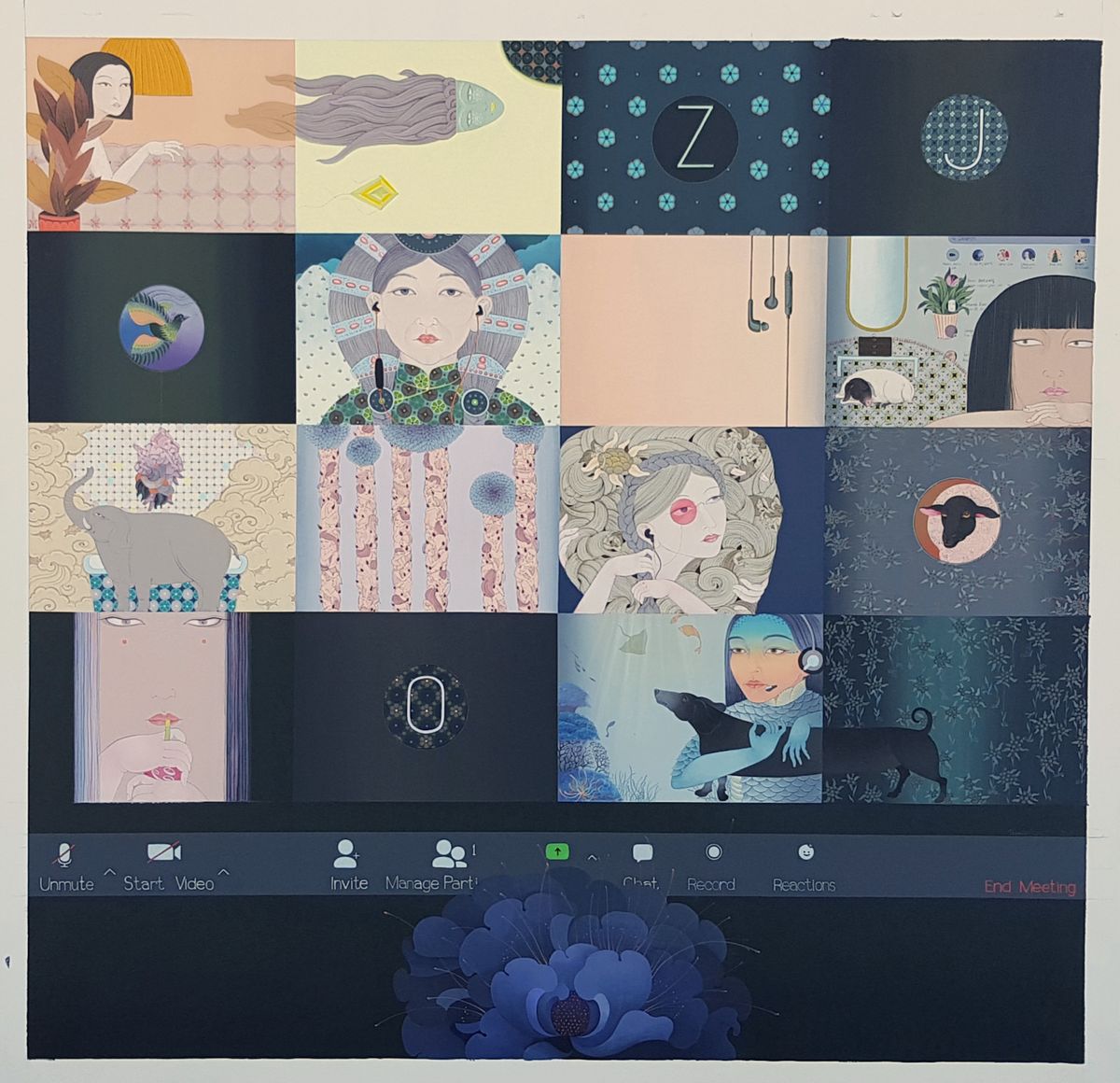As New York passed the second anniversary of the initial Covid-19 lockdowns, galleries and museums throughout the city opened shows exploring how the pandemic has affected everyday life. Touching on themes of isolation, public health and the increasingly blurred boundaries between our digital and physical lives, these five shows offer a look at some of the artistic responses to life during the pandemic.
Of Zoom calls and Zurag paintings
Mongolian artist Uuriintuya Dagvasambuu has always been interested in representations of healing. Working in a flat, figurative style associated with Zurag painting, Dagvasambuu builds upon traditional Mongolian themes including Buddhism, enlightenment and nomadic living. In her latest paintings, she explores two new conditions of modern life: the increasing presence of the virtual world in the physical, amplified by the growth of the metaverse, and the shared, global experiences of the pandemic. Her works include recognizable, 21st century imagery like VR headsets, the grid of a Zoom meeting and applications scattered around the screen of a phone, as well as uniquely pandemic-related themes of quarantine, personal protective equipment and vaccines. She even captures some of the more absurd conditions of the last two years, like an empty toilet paper roll in Open 24/7 (2022) that nods to the panic-buying and shortages of the early pandemic days.
- Uuriintuya Dagvasambuu: Moods in the Metaverse, until 7 May, Sapar Contemporary
Sidewalk socialising
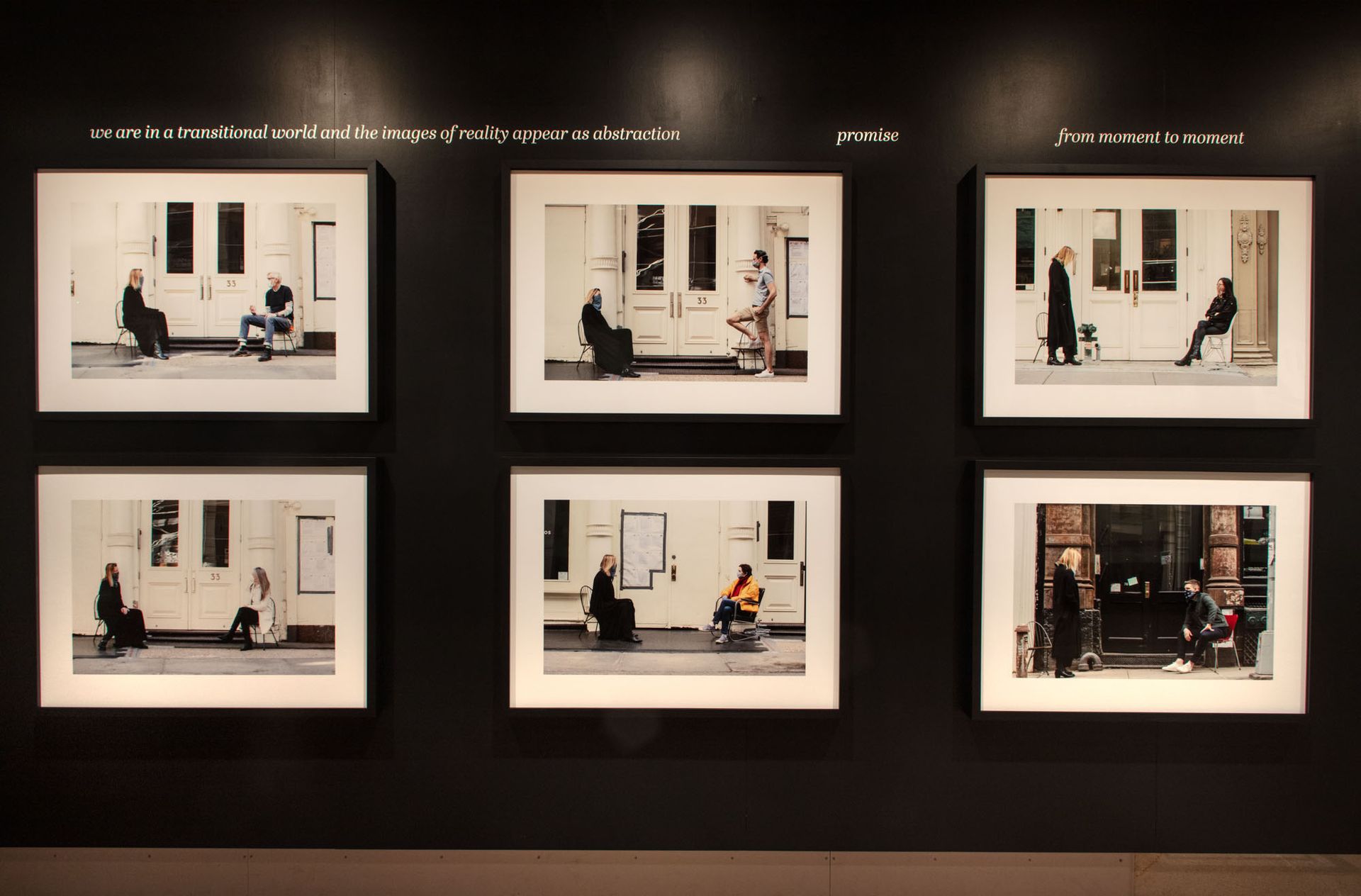
Renate Aller: side walk 6' apart in New York City, installation view at the New-York Historical Society Photo: Glenn Castellano, New-York Historical Society
In March 2020, photographer Renate Aller found herself among the group of New Yorkers who decided to ride out lockdown in the city. By April, her urge to connect with others took over and she began inviting friends, one at a time, to join her on the sidewalk in Soho, all from six feet apart. Photographing each of her encounters, many of which were the first social interactions her friends had experienced since before lockdown, Aller produced a series of images that capture the anxiety and uncertainty of the early pandemic days, as well as the resilience of New Yorkers. A monument to how society adapted, the exhibition offers a cautious dose of optimism that we are far enough from the dark days of the pandemic to be able to meaningfully reflect on them, but simultaneously reserves space for losses, changes and lingering uncertainty.
- Renate Aller: side walk 6’ apart in New York City, until 10 July, New-York Historical Society
Inaccessible medical knowledge
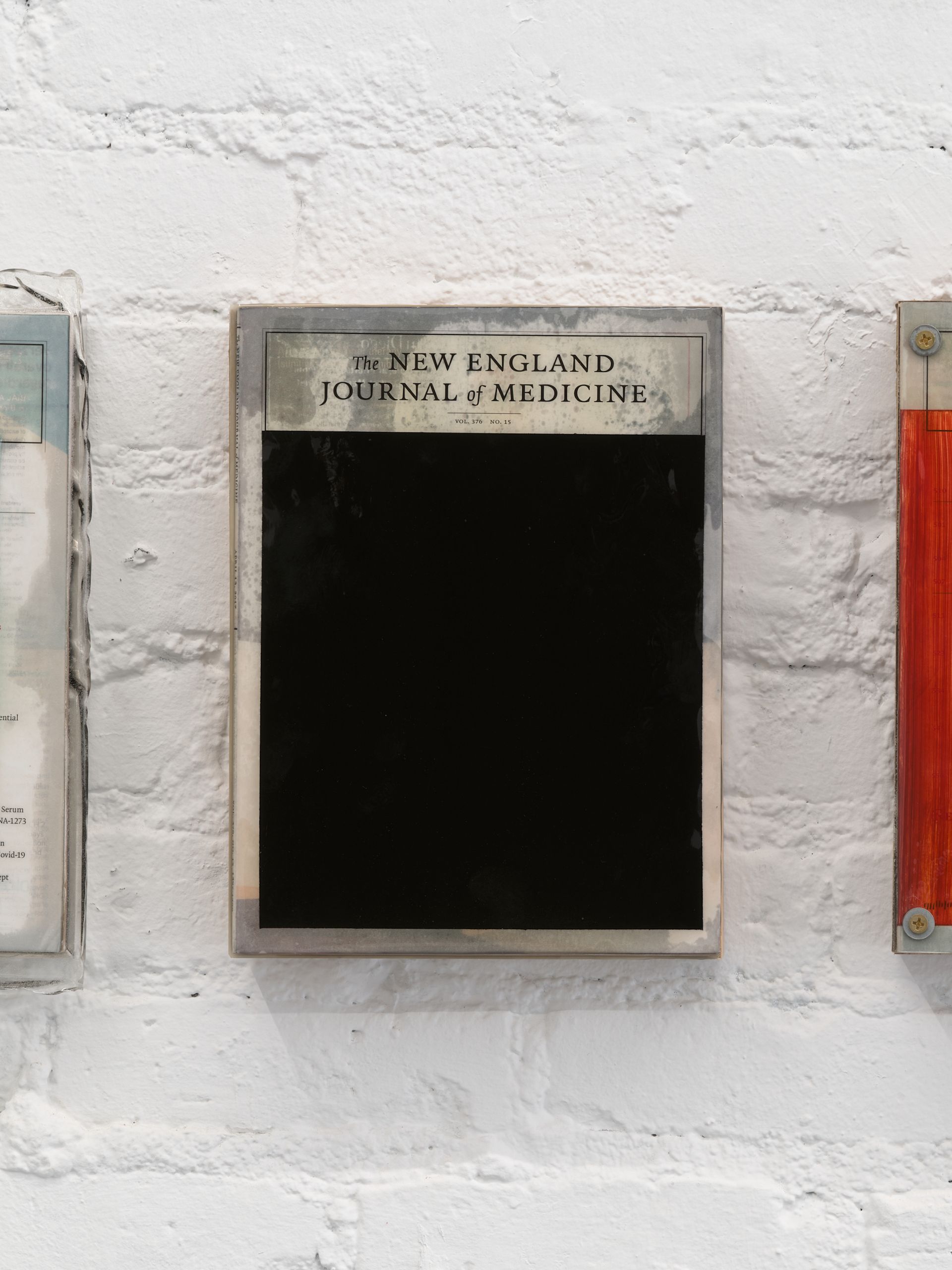
Alex Stern: AWAKE AWAKE ASLEEP installation view Courtesy of Trotter & Sholer and Shark Senesac
In AWAKE AWAKE ASLEEP, Trotter&Sholer presents a series of multimedia works by Alex Stern that all feature copies of The New England Journal of Medicine encased in resin and mounted on wood frames. Exploring topics of public health and the opioid crisis, the contents of the journals are obscured by words, imagery and actual objects like latex gloves and face masks. There is a sense of paying homage to medicine, as well as a hint of cynicism and censorship. In one work, black diagonal stripes cover nearly all of the journal’s text apart from the words “opioid crisis”. In another, aptly titled Erasure (2021), the entire page is obscured in black. The show points to how fluent the general public has become in medical language over the last two years.
- Alex Stern: AWAKE AWAKE ASLEEP, until 9 April, Trotter&Sholer
Private spaces for public consumption
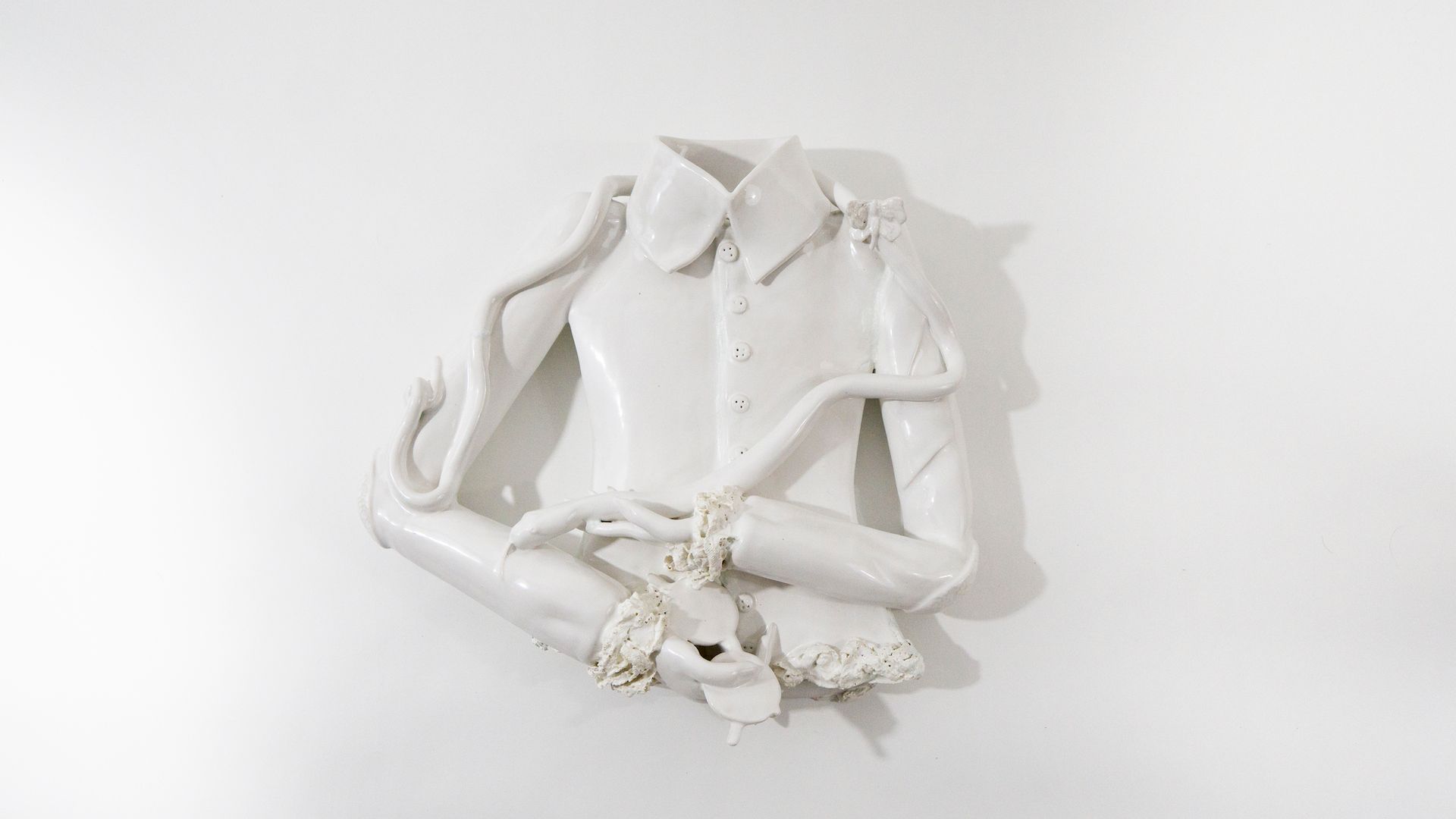
Jen Dwyer, Tomorrow's Shirt, 2021, ceramics and glaze Courtesy Dinner Gallery and the artist
Jen Dwyer touches on one of the more personal consequences of the pandemic: the way in which our personal lives, private homes, public personae and work spaces all bled together. Spaces that were once private became our Zoom backgrounds and had to be arranged with objects coded with visual cues to project a specific message about our personalities. In Garden of Archetypes, Dwyer presents a female character preparing to leave her private bubble and enter the public sphere. Dwyer defines her character with Rococo-inspired ceramic objects like a pristine, white shirt set aside for future wear and manicured nails tapping on a keyboard. Like our meticulously curated shelves and backgrounds, the show points to the role of material culture in creating and communicating a sense of self.
- Jen Dwyer: Garden of Archetypes, until 23 April, Dinner Gallery
Cornered during confinement
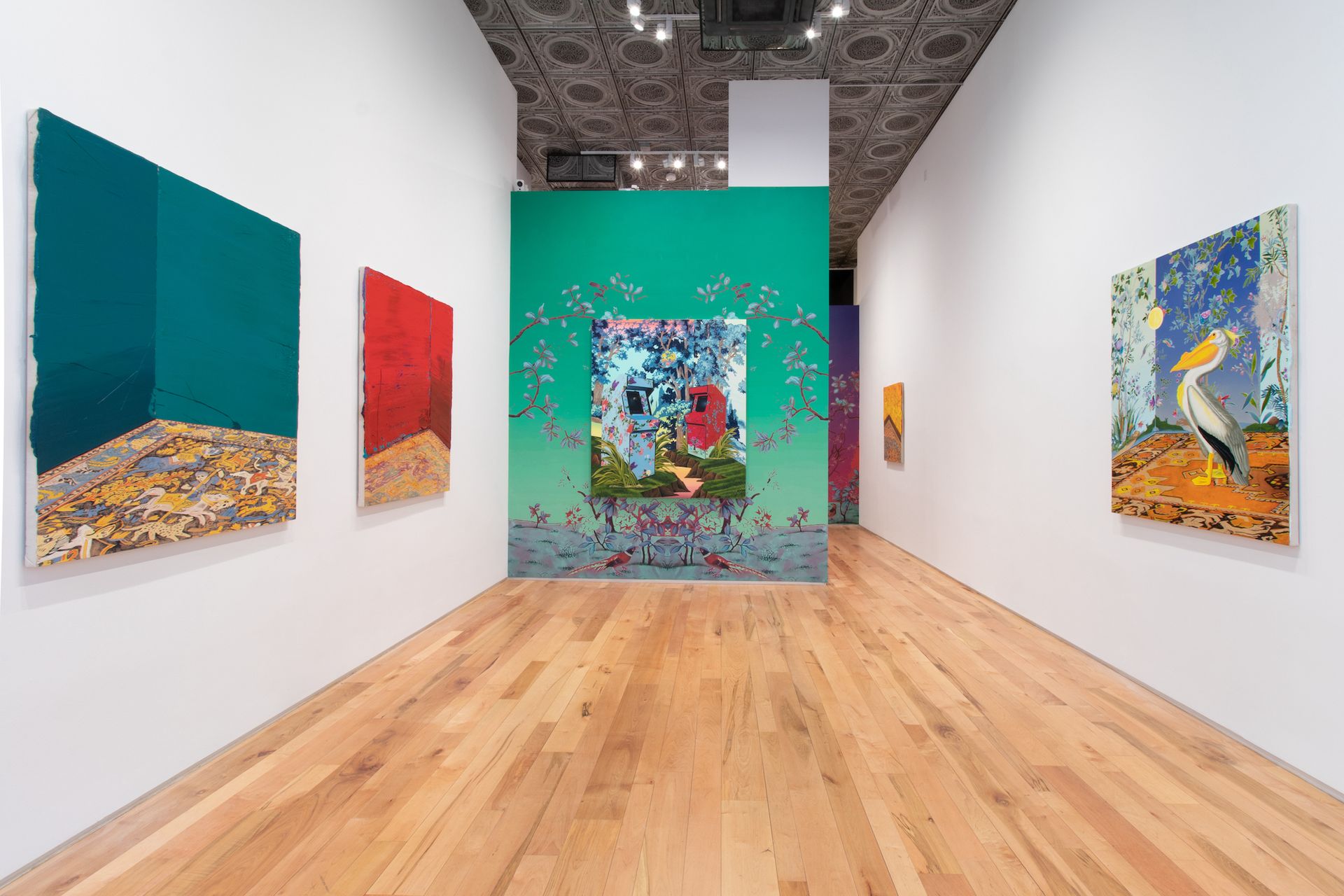
Stephen Thorpe: Boundaries of the Soul installation view Courtesy Denny Dimin Gallery and the artist
Unexpected, dreamlike surprises await in Stephen Thorpe’s so-called “corner paintings”. Portraits of interior corners that the artist developed during isolation, the works weave in strange, out-of-place elements like arcade games and Audubon-esque birds. The wall colours, carpets and room contents differ in each work, but there is a sense of familiarity connecting all the paintings, as if each one depicts the same vantage point constantly reimagined. Thorpe’s corners represent all of the interior views that became our habitats during lockdown. They also, as the exhibition title indicates, mark physical boundaries as spaces of safety but also entrapment. That may sound bleak, but Thorpe’s works also exemplify the unbound potential of our own imaginations.
- Stephen Thorpe: Boundaries of the Soul, until 14 April, Denny Dimin Gallery


